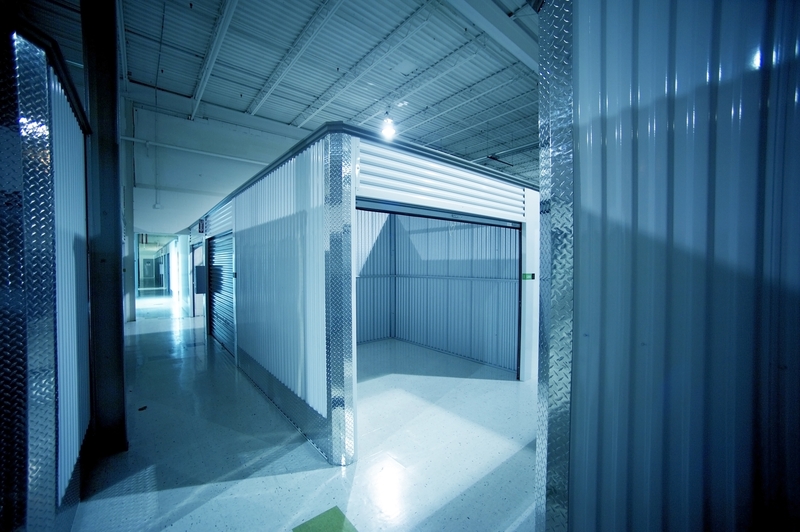How to Pack Personal and Valuable Items Securely During a Move
Moving to a new home or office is both exciting and challenging. Whether you're relocating across town or across the country, ensuring the safety of your personal and valuable items is a top priority. The journey can be unpredictable, and without proper planning and technique, cherished possessions could be damaged, lost, or even stolen. This comprehensive guide will walk you through how to pack personal and valuable items securely during a move, help you avoid common mistakes, and provide expert tips for maximum protection.
Understanding What Constitutes Personal and Valuable Items
Before you start packing, it's essential to identify the specific items that require extra care. Personal and valuable items often include:
- Important documents: Passports, birth certificates, property deeds, legal papers, and medical records
- Jewelry and watches
- Cash and financial instruments
- Collectibles and heirlooms: Stamps, coins, artwork, and antiques
- Electronics: Laptops, tablets, cameras, smartphones, and external drives
- Sentimental items: Photo albums, personal diaries, and mementos
Recognizing these items is the first step towards ensuring their safety during your move.

Why Proper Packing Matters
During a move, valuable personal belongings are at risk of being damaged by bumps, drops, environmental factors, or mishandling. Items such as delicate jewelry or important documents can't simply be replaced. Properly packing these items not only preserves their condition but also offers peace of mind throughout your moving journey.
Essential Packing Supplies for Securing Personal and Valuable Items
Investing in the right supplies makes all the difference. Here are must-have materials:
- Sturdy, new boxes -- Avoid reused, weakened boxes
- Bubble wrap and packing paper
- Small, lockable containers or safes for jewelry and vital records
- Cushioning materials: Foam inserts, packing peanuts, or soft towels
- Resealable plastic bags: For coins, small parts, or electronics
- Waterproof folders and envelopes: Essential for documents
- Heavy-duty packing tape and tamper-evident seals
- Labels and markers -- Keep labels discreet for valuables
Pro tip:
Choose supplies of the highest quality, especially for fragile and expensive belongings. High-grade materials increase the security of your possessions in transit.
Step-by-Step Guide: How to Pack Personal and Valuable Items Safely
1. Create a Master Inventory of Valuables
Start by making a detailed inventory of your personal valuables. List items, take photographs, and record serial numbers where applicable. Keep a digital (cloud-based) and a printed copy. This helps:
- Track items during packing and unpacking
- Simplify any insurance claims if misfortune occurs
- Provide proof of ownership and condition
2. Organize Before You Pack
Separate valuables from regular household goods before boxing anything. This not only prevents you from accidentally misplacing something precious but also helps you allocate appropriate time and care for packing important belongings securely.
3. Use the "Carry Along" Method Whenever Possible
Whenever feasible, keep personal and valuable items with you during the move. For instance, store passports, cash, expensive jewelry, and hard drives in your purse, backpack, or a designated lockbox. This method is especially critical for air or long-distance travel.
4. Packing Techniques for Different Valuables
- Important Documents: Place in a waterproof, fire-resistant folder or envelope. Avoid folding. Add labels like "Personal" instead of specifying contents. Keep these on your person during the move.
- Jewelry and Watches: Use small boxes lined with cotton, velvet, or bubble wrap. Pack jewelry individually to prevent scratches and tangling. Seal boxes with tamper-evident tape, and consider a portable safe if you have a large collection.
- Cash and Financial Instruments: Place in a locked pouch or portable safe. Never put large sums in general moving boxes.
- Collectibles and Heirlooms: Wrap each piece in acid-free tissue paper, then bubble wrap. Secure them in appropriately sized boxes filled with packing peanuts or foam. For extremely high-value items, consider specialty moving services or climate-controlled transportation.
- Electronics: Use original packaging when possible. If not available, wrap each device in anti-static bubble wrap, then place in cushioned boxes. Remove batteries to avoid leaks and back up all important data before packing.
- Sentimental Items: Photo albums and diaries should be sealed in waterproof bags and placed in sturdy boxes with ample padding.
5. Label Discreetly
While labeling boxes aids organization, avoid drawing attention to contents when it comes to valuables. Use coded labels ("Box A1," "Family Photos," etc.) rather than descriptions like "jewelry" or "documents." Only trusted individuals should understand these designations.
6. Secure Each Box Properly
Seal all boxes with strong packing tape, reinforcing corners and seams. For high-value items, add tamper-evident tape or security seals. This not only prevents accidental opening but also deters theft.
7. Track and Transport Wisely
Place valuable boxes in a separate area, and load them into your personal vehicle if possible. For professional movers, notify the company in advance about high-value items - some may require inventories or special handling.
Using Professional Moving Services for Valuables
If managing the packing and transporting of valuables feels overwhelming, you can always rely on specialized moving services. These companies often offer:
- Climate-controlled transit: To protect against heat, humidity, and cold
- Custom crating and packing for artwork, antiques, and collectibles
- Enhanced security protocols, including GPS-tracked vehicles
- Insurance options tailored for expensive or irreplaceable items
Research reputable moving companies, read reviews, and verify licenses and insurance before entrusting them with your prized possessions.
Insurance: Don't Overlook This Critical Step
No matter how careful you are in securely packing personal and valuable items during a move, unforeseen events can occur. That's why insuring your valuables is crucial.
- Homeowners' or renters' insurance: Check your policy - some cover items in transit, some do not.
- Moving company insurance: Professional movers usually offer limited coverage. Consider purchasing additional protection (full value or declared value coverage).
- Specialty insurance: For items like fine art, jewelry, or rare collectibles, seek policies with higher limits or specialty coverage.
Document everything before your move (photos, appraisals, serial numbers) to facilitate smooth claims in case of loss or damage.
Special Considerations: Moves Involving Air Travel or International Relocation
If your move includes air travel or crossing borders, security and packing procedures become more taxed:
- Follow airline guidelines: Keep valuables in carry-on luggage only.
- Customs and declarations: Know the limits and declaration rules for cash, jewelry, and artworks. Obtain export permits if required.
- International insurance: Ensure your protection policy extends beyond domestic borders.
- Translation of records: For important documents, have certified translations if needed.
What NOT to Do: Common Packing Mistakes for Valuables
Avoid these frequent errors to ensure safe packing of valuables during a move:
- Don't use generic boxes with poor security.
- Don't label boxes openly with contents. Tempting thieves is easier than you think.
- Don't delay organizing and packing valuables until the last minute. Rushed packing invites mistakes and damages.
- Don't forget to back up digital files.
- Don't assume professional movers handle all valuables without advance notice.
- Never ship originals of critical documents if you can travel with them personally.
Checklist: Securely Packing Valuables for Your Move
- Make an inventory with descriptions and photos
- Purchase premium packing supplies
- Organize valuables by type and size
- Purge unnecessary items and re-home valuables you won't move
- Packing with appropriate materials for each category
- Label boxes wisely (coded labels only)
- Seal boxes with strong and tamper-evident tape
- Arrange insurance coverage
- Pack essential valuables with your personal luggage if possible
- Communicate with movers and provide instructions on high-value items
- Update your inventory as boxes are loaded and unloaded
After the Move: Unpacking and Verifying Your Valuables
Once you arrive at your new destination, unpack personal and valuable items first. Cross-check each against your inventory, inspect for damage or loss, and update your insurance records if needed. For particularly valuable possessions, store them securely immediately -- use safes, safety deposit boxes, or locked cabinets.

Frequently Asked Questions About Packing Valuables for a Move
Should I pack valuables with the rest of my household items?
No. Always separate valuables from general household goods. If possible, take them with you personally or use secure methods recommended by professional moving companies.
Can moving companies transport my jewelry and cash?
Most moving companies advise against entrusting high-value small items like cash and jewelry, due to insurance and liability reasons. If you must send these, use certified valuables transport services.
What should I do if a valuable item is lost or damaged during the move?
Contact your mover and insurance provider immediately. Use your inventory and photographs to document the loss and support your claim.
What is the best way to pack electronics securely?
Original packaging is optimal; otherwise, cushion electronics with anti-static wrap in sturdy boxes. Keep batteries separate, and back up all important files and data before moving.
Conclusion: Peace of Mind Through Preparedness
Moving can be a stressful endeavor, but by taking the time to pack personal and valuable items securely, you significantly increase the safety and security of your treasured belongings. With proper planning, high-quality supplies, and the right techniques, you can protect even your most irreplaceable possessions from loss and damage. Preparation and vigilance are your best tools for a successful and stress-free move.
Ready for your move? Begin sorting, inventorying, and gathering supplies today -- your valuables deserve the best protection possible!